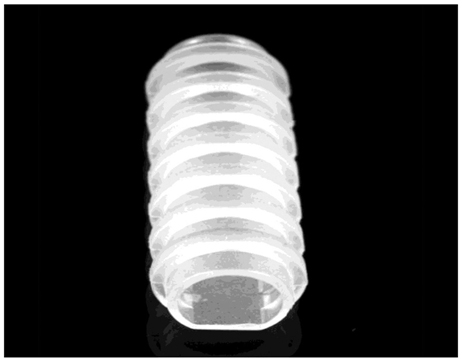Yonsei Med J.
2012 May;53(3):565-570. 10.3349/ymj.2012.53.3.565.
Prognostic Factors for Endotracheal Silicone Stenting in the Management of Inoperable Post-Intubation Tracheal Stenosis
- Affiliations
-
- 1Division of Pulmonary and Critical Care Medicine, Department of Medicine, Samsung Medical Center, Sungkyunkwan University School of Medicine, Seoul, Korea. hjk3425@skku.edu
- KMID: 1776992
- DOI: http://doi.org/10.3349/ymj.2012.53.3.565
Abstract
- PURPOSE
Stenting has been developed to deal with airway stenosis and is applicable in patients with post-intubation tracheal stenosis (PITS) in whom surgery would not be indicated. The purpose of this study was to investigate the prognostic factors in inoperable patients in whom a silicone stent was inserted due to PITS.
MATERIALS AND METHODS
We retrospectively evaluated 55 PITS patients undergoing silicone stenting between January 2001 and December 2009.
RESULTS
Silicone stent was inserted to narrowed trachea after the combination of pre-dilatation including laser cauterization, mechanical bougienation and ballooning. Following airway stabilization, the stent could be removed successfully in 40% (22/55) of the patients after median 12 months of stenting. However, in 60% (33/55) of patients, the stent could not be removed successfully and surgical management was needed after initial stabilization. Multivariate analysis revealed that the stent could be successfully removed more frequently in those who do not have cardiovascular disease [odds ratio (OR)=12.195; p=0.036] and the intervention was performed within 6 months after intubation (OR=13.029; p=0.031).
CONCLUSION
Among those patients undergoing silicone stenting due to PITS, the stent could be successfully removed when patients do not have cardiovascular disease and stented within 6 months after intubation.
Keyword
MeSH Terms
Figure
Reference
-
1. Gamsu G, Webb WR. Computed tomography of the trachea and mainstem bronchi. Semin Roentgenol. 1983. 18:51–60.
Article2. Pereszlenyi A, Igaz M, Majer I, Harustiak S. Role of endotracheal stenting in tracheal reconstruction surgery-retrospective analysis. Eur J Cardiothorac Surg. 2004. 25:1059–1064.
Article3. Park HY, Kim H, Koh WJ, Suh GY, Chung MP, Kwon OJ. Natural stent in the management of post-intubation tracheal stenosis. Respirology. 2009. 14:583–588.
Article4. Myer CM 3rd, O'Connor DM, Cotton RT. Proposed grading system for subglottic stenosis based on endotracheal tube sizes. Ann Otol Rhinol Laryngol. 1994. 103(4 Pt 1):319–323.
Article5. Ryu YJ, Kim H, Yu CM, Choi JC, Kwon YS, Kwon OJ. Use of silicone stents for the management of post-tuberculosis tracheobronchial stenosis. Eur Respir J. 2006. 28:1029–1035.
Article6. Kim H. Stenting therapy for stenosing airway disease. Respirology. 1998. 3:221–228.
Article7. Colt HG, Dumon JF. Airway stents. Present and future. Clin Chest Med. 1995. 16:465–478.8. Lang FJ, Hurni M, Monnier P. Long-segment congenital tracheal stenosis: treatment by slide-tracheoplasty. J Pediatr Surg. 1999. 34:1216–1222.
Article9. Marel M, Pekarek Z, Spasova I, Pafko P, Schutzner J, Betka J, et al. Management of benign stenoses of the large airways in the university hospital in Prague, Czech Republic, in 1998-2003. Respiration. 2005. 72:622–628.
Article10. Brichet A, Verkindre C, Dupont J, Carlier ML, Darras J, Wurtz A, et al. Multidisciplinary approach to management of postintubation tracheal stenoses. Eur Respir J. 1999. 13:888–893.
Article11. de Mello-Filho FV, Antonio SM, Carrau RL. Endoscopically placed expandable metal tracheal stents for the management of complicated tracheal stenosis. Am J Otolaryngol. 2003. 24:34–40.
Article12. Benjamin B. Prolonged intubation injuries of the larynx: endoscopic diagnosis, classification, and treatment. Ann Otol Rhinol Laryngol Suppl. 1993. 160:1–15.
Article13. Marshak G, Doyle WJ, Bluestone CD. Canine model of subglottic stenosis secondary to prolonged endotracheal intubation. Laryngoscope. 1982. 92(7 Pt 1):805–809.
Article14. Supance JS, Reilly JS, Doyle WJ, Bluestone CD, Hubbard J. Acquired subglottic stenosis following prolonged endotracheal intubation. A canine model. Arch Otolaryngol. 1982. 108:727–731.
Article15. Nouraei SA, Ghufoor K, Patel A, Ferguson T, Howard DJ, Sandhu GS. Outcome of endoscopic treatment of adult postintubation tracheal stenosis. Laryngoscope. 2007. 117:1073–1079.
Article
- Full Text Links
- Actions
-
Cited
- CITED
-
- Close
- Share
- Similar articles
-
- Successful management of tracheal stenosis using tracheal stenting in a Russian Blue cat
- Laryngeal Mask Airway as a Conduit for Fiberoptic Intubation and Tracheal Evaluation: 2 Cases report
- Tracheal Wall Thickening Is Associated with the Granulation Tissue Formation Around Silicone Stents in Patients with Post-Tuberculosis Tracheal Stenosis
- Airway obstruction due to post intubation circumferential tracheal web formation: A case report
- Surgical Treatment of Tracheal Stenosis




